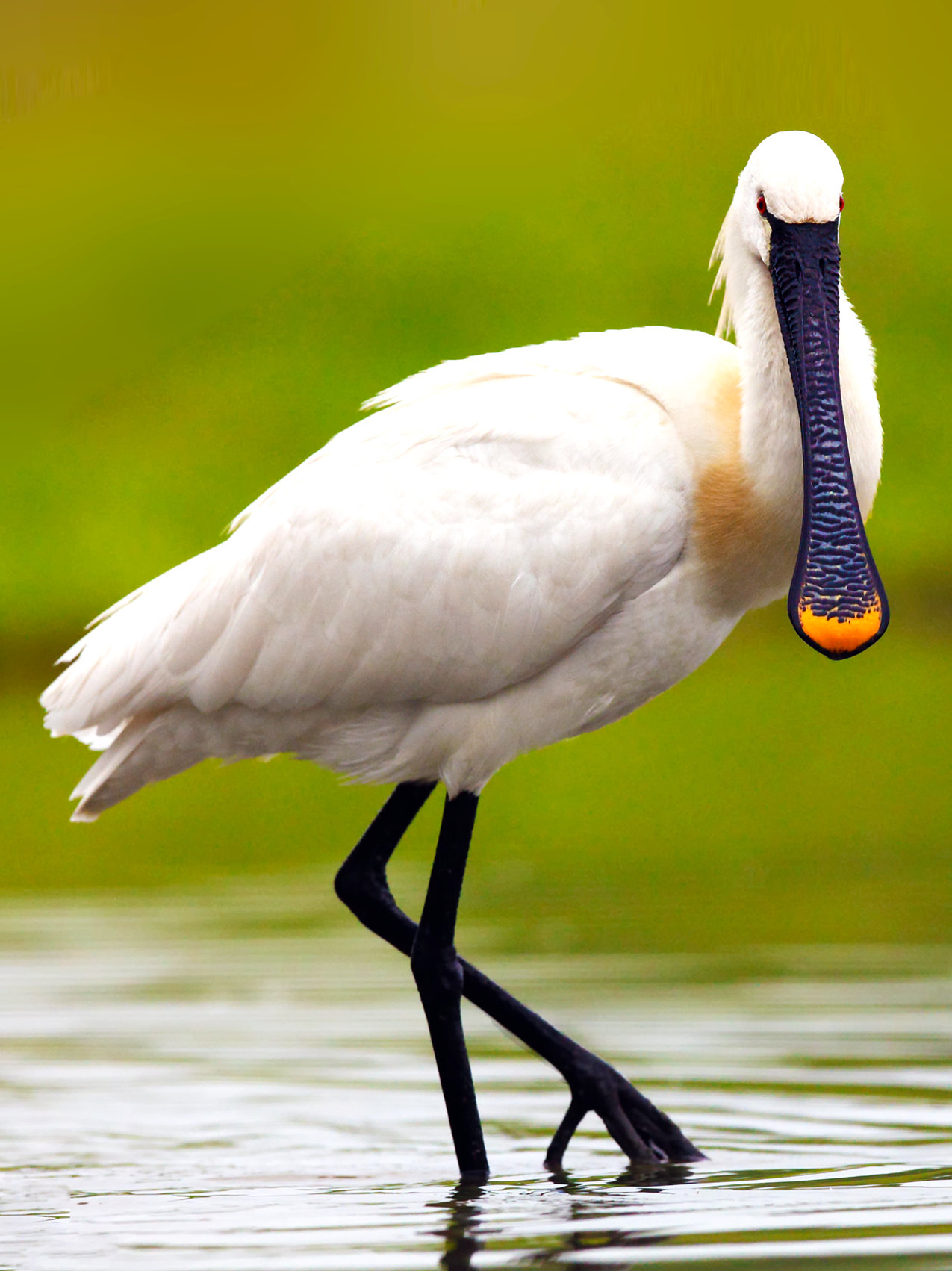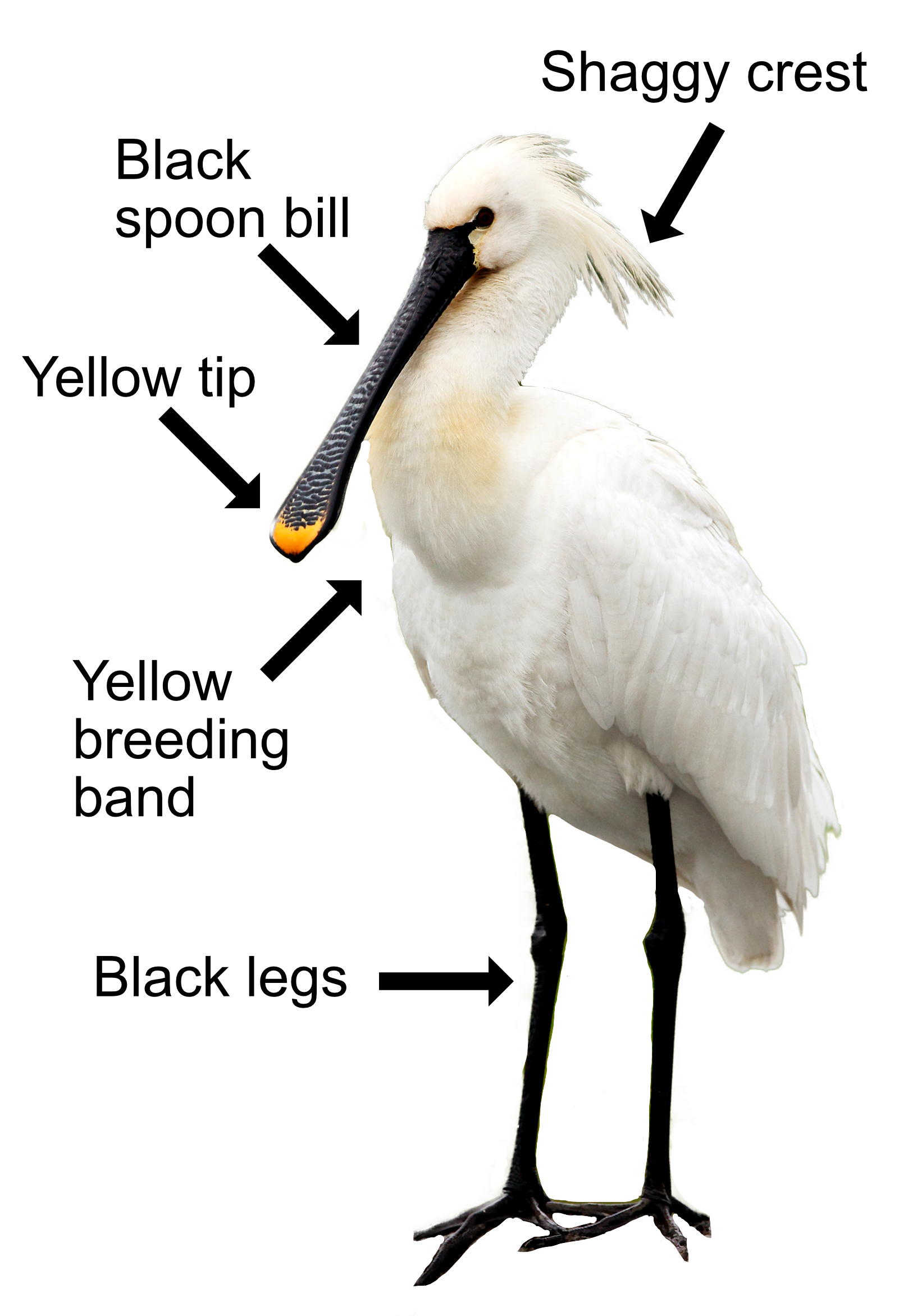
It is pretty obvious why we call them Spoonbills. They have a huge spatula-shaped bill. Each year, we get a small number (50-80 pairs) breeding in Britain, mainly on coastal marshes and reedbeds. They arrive in May and leave again in August for a warmer winter in southern Europe, though a few can overwinter here.
The Spoonbill is slightly smaller than a Grey Heron. It is white with a short shaggy crest, a long black spoon-shaped bill with a yellow tip, and thick black legs. It can have a yellow band on its breast when in breeding plumage. Youngsters have black tips on their wings. In flight, they hold their necks and long bills out front and trail their feet out the back, giving them a distinctive profile compared to Herons, Egrets, Swans, and Geese. Spoonbills are mainly silent, only doing some bill snapping at their nests. While sleeping during the day, they annoyingly tuck their bills along their backs, making them difficult to see, their thick black legs being the only giveaway.

Spoonbills feed together in groups on open water, often in the dark and seldom mixing with other birds, as they are shy and don’t want anyone to make fun of their strange bills. They feed by sweeping their bills from side to side, filtering tiny creatures out of the water. The moment any small creature touches the inside of their bill, it is snapped tightly shut. They eat insects, larvae, snails, small fish, amphibians and plants. Because of the tiny size of their food, they need to feed for many hours each day.
They occasionally breed in Norfolk and Yorkshire, nesting in colonies with nests so close together they can be touching. Members of the colony will gang together to drive predators away. The scruffy nest is a pile of reeds and twigs on the ground. The colony’s egg-laying is synchronised so the chicks hatch at about the same time and can be cared for by all the parents in the colony. Mum lays 2-4 eggs which hatch after 24 days. The youngsters can fly at 24 days but are fed by their parents for 10 weeks.
In Europe, Spoonbills experienced a significant decrease between 1960 and 1990, but since then they have recovered and there are now estimated to be about 29,000 mature birds. The decrease in numbers was caused by a combination of DDT poisoning (which is now banned) and the drainage of marshes leading to the loss of breeding grounds. Spoonbills are now specially protected and the conservation of marshes has helped them.
Their Latin name is ’platalea leucorodia’ where ’platalea’ is from the Ancient Greek meaning ‘broad’, and ’leucorodia’ is from ’leukerodios’ for ‘spoonbill’, combination of ’leukos’ for ‘white’ and ’erodios’ for ‘heron’. In England, it was traditionally known as the ‘shovelard’, a name that was later used for the Shoveler duck instead.